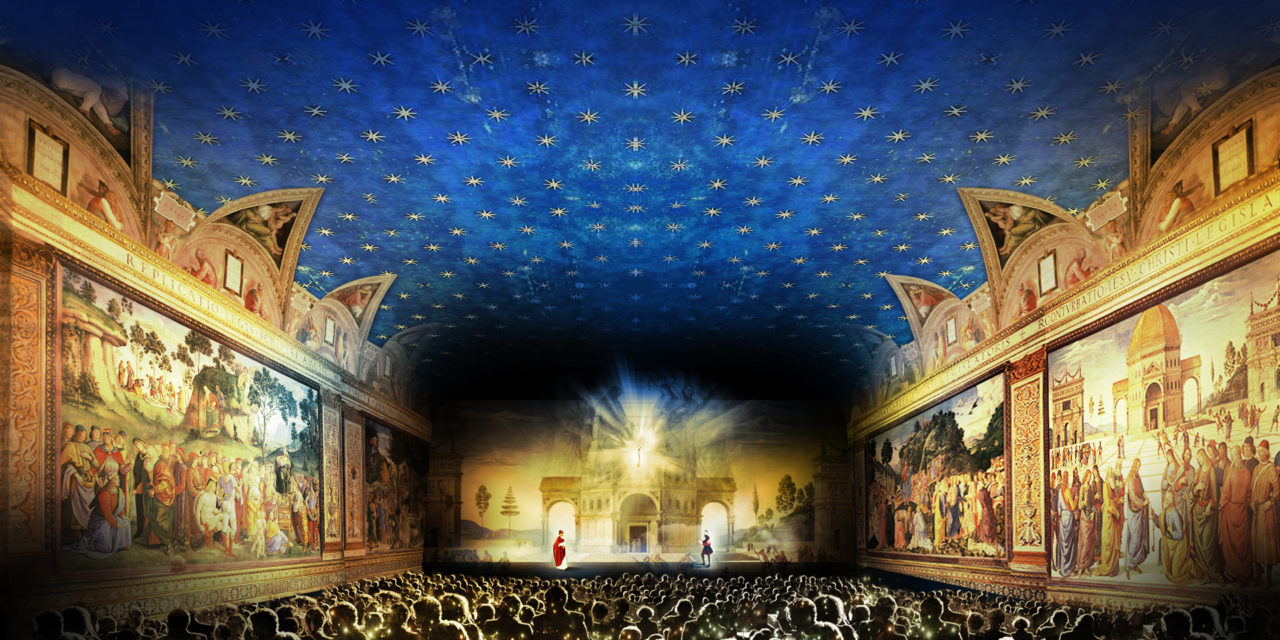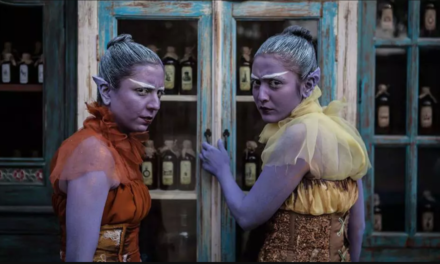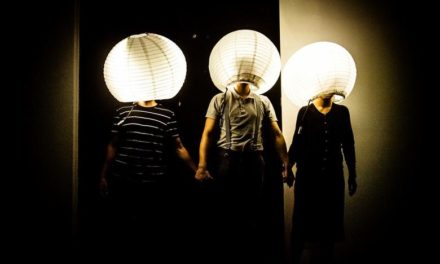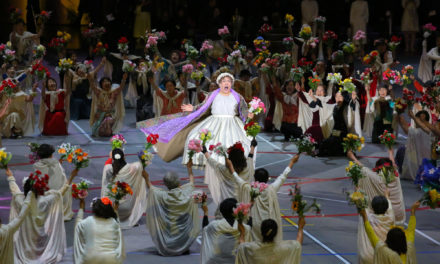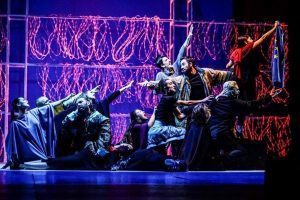Over the course of time, the great aesthetic impact of the Sistine Chapel has been testified to with many episodes of admiration; Michelangelo’s masterpiece can also be considered a source of inspiration for new artistic products, offering something worthy of meditation for future generations. Just one example: in the 1910s, the actress Eleonora Duse wanted to realize a silent movie about this very special place in Rome; it was an avant-garde project with high technical complexity but conceived as a good opportunity to improve the cultural level of the audience. Unfortunately, it remained only a dream, but its novelty somewhat presaged the power of a production able to combine art history, performance, and new technologies.
Now Duse’s dream is to be realized in Giudizio Universale. Michelangelo And The Secrets Of The Sistine Chapel, an original production by Artainment Worldwide Shows, with the scientific consultancy of the Vatican Museums. The production will debut on March 15 in Rome, at the Auditorium della Conciliazione. With his assistant Lulu Helbek, the director Marco Balich has created an innovative format, based on the use of the most advanced technologies for the performing arts: the result is a spectacular narration of the genesis of the Sistine Chapel. The music is by John Metcalfe, and the theme is written by Sting; the actor Pierfrancesco Favino is the voice of Michelangelo—in Italian and English because this show has dual linguistic versions.
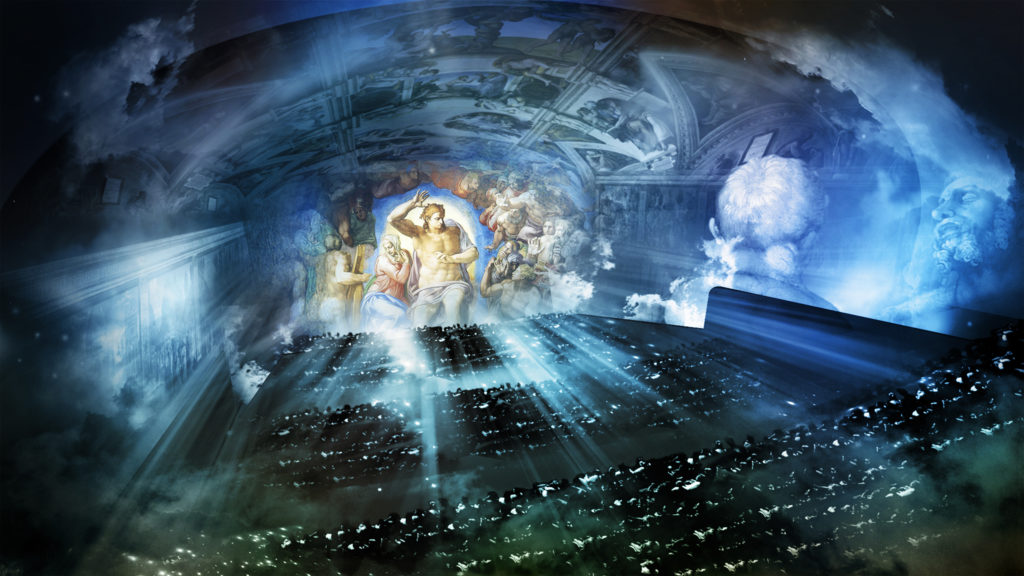
Giudizio Universale. Michelangelo And The Secrets Of The Sistine Chapel. Immersive projection. Auditorium della Conciliazione in Rome (2018). Press Photo.
Michelangelo is not only a genius of the Renaissance; he is a leading figure in human history, and his hard work for the creation of a world-famous treasure, the Sistine Chapel, is still a real lesson of life. Here, we can live an exceptional experience between emotion and respect, ambition and style, tradition and innovation. The impressiveness of the several scenes, dominated by the Universal Law, generates a deep sense of spiritual elevation. In his time, Michelangelo had the courage to invent a new artistic format, based on the idea of a total show: visitors are still astonished by the sense of infinity generated by the Sistine Chapel, and feel themselves a little part of a whole cosmos—in a sort of sacred embrace which ennobles and dignifies humankind.
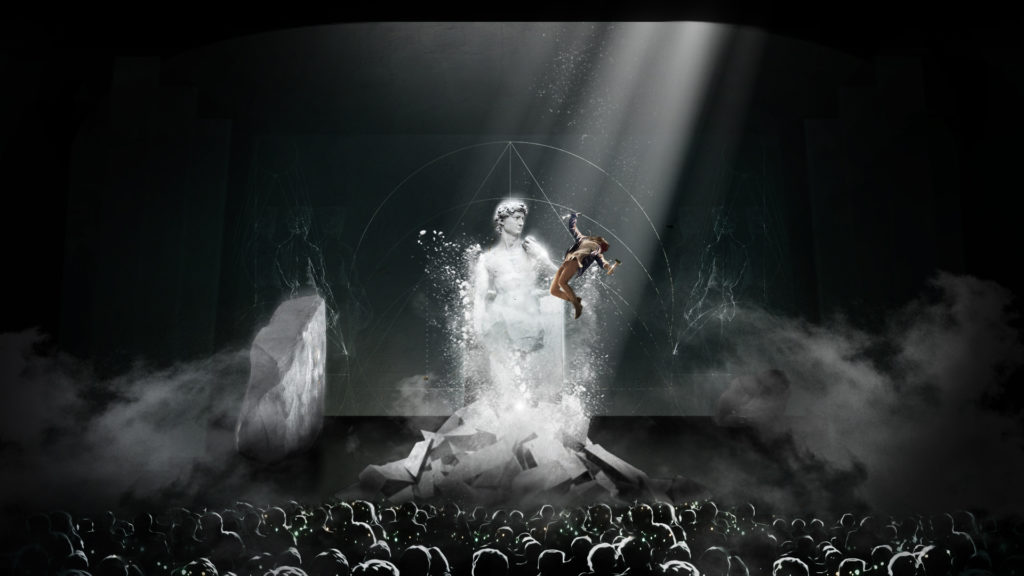
Giudizio Universale. Michelangelo And The Secrets Of The Sistine Chapel. Act 1, the sculptor Michelangelo. Auditorium della Conciliazione in Rome (2018). Press Photo.
Supported by these aesthetic elements, the director Marco Balich has elaborated a sensorial and immersive travel piece for audiences which emphasizes the acoustic dimension (the music and the voice of Michelangelo), spatial movement (the performances of Fotis Nikolaou and other dancers), and visual impact, with many special effects (in collaboration with the video designer Luke Halls and the lighting designer Bruno Poet). The set design is by Stufish Entertainment Architects, and the theatrical supervisor is Gabriele Vacis.
Teaser of Michelangelo Show.
The reminiscence of the Baroque machinery is re-invented with the new technologies, in a colossal show for the town of Rome which aims to be a “must see” for tourists, students, lovers of the fine arts, and many others. With his supreme talent and the consciousness of his vocation, Michelangelo was an artist who conquered the heart of the people: this show is an invitation to be fascinated by his charismatic personality.
Giudizio Universale. Michelangelo And The Secrets Of The Sistine Chapel is a notable production, which exalts the masterpiece of a genius of the Renaissance. It is also a way to celebrate the eternal beauty of Rome, among the wonders of our time.
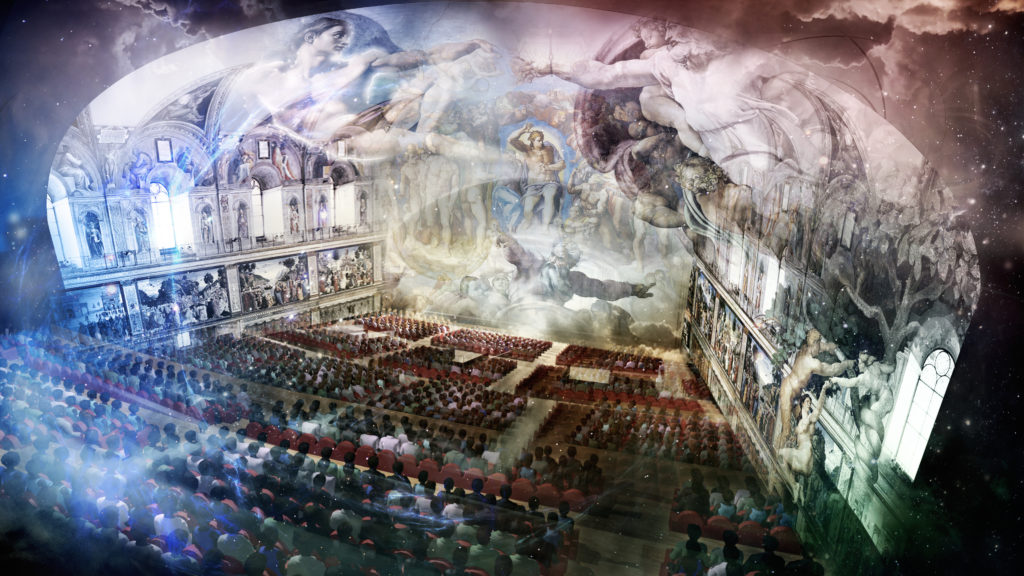
Giudizio Universale. Michelangelo And The Secrets Of The Sistine Chapel. Immersive projection. Auditorium della Conciliazione in Rome (2018). Press Photo.
This post was written by the author in their personal capacity.The opinions expressed in this article are the author’s own and do not reflect the view of The Theatre Times, their staff or collaborators.
This post was written by Maria Pia Pagani.
The views expressed here belong to the author and do not necessarily reflect our views and opinions.

